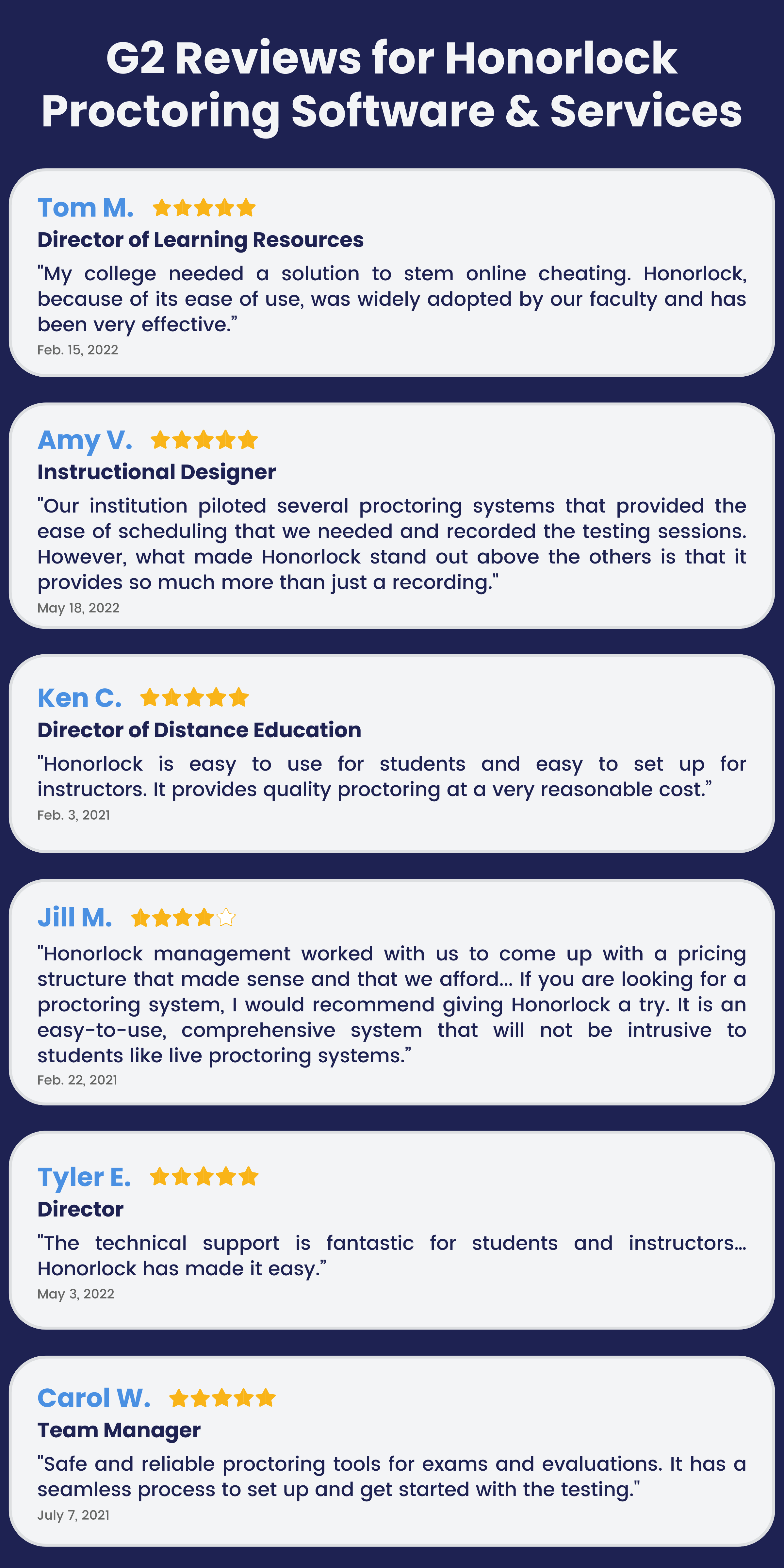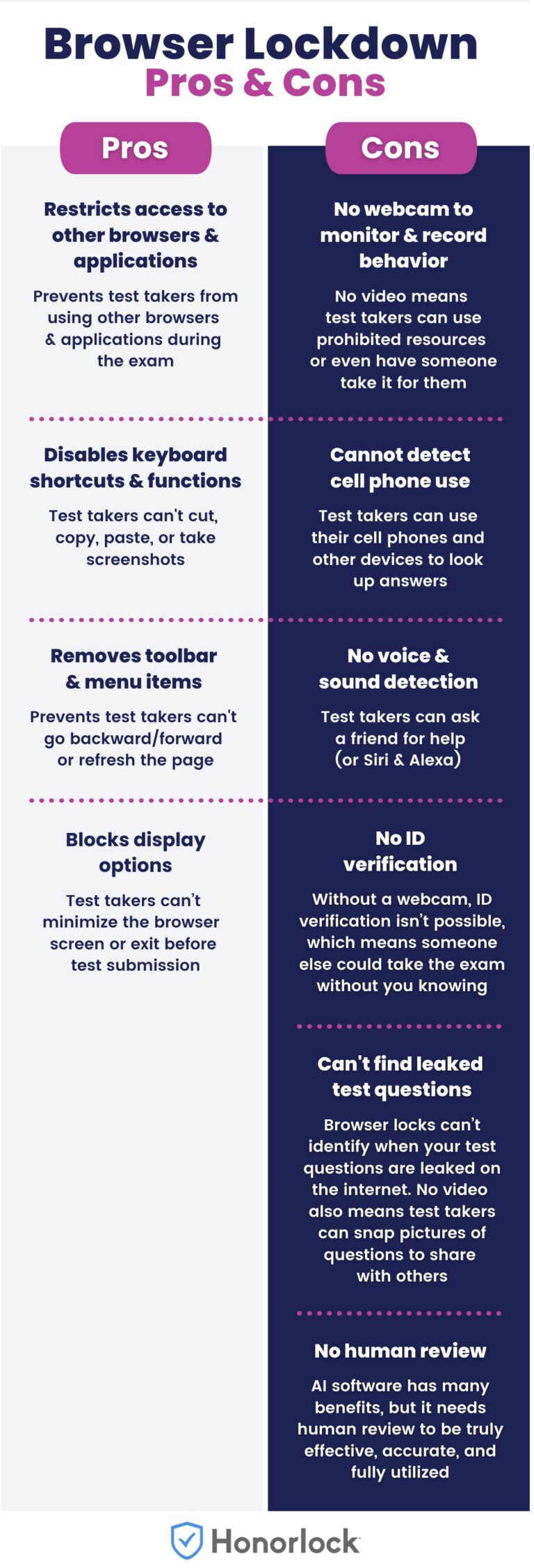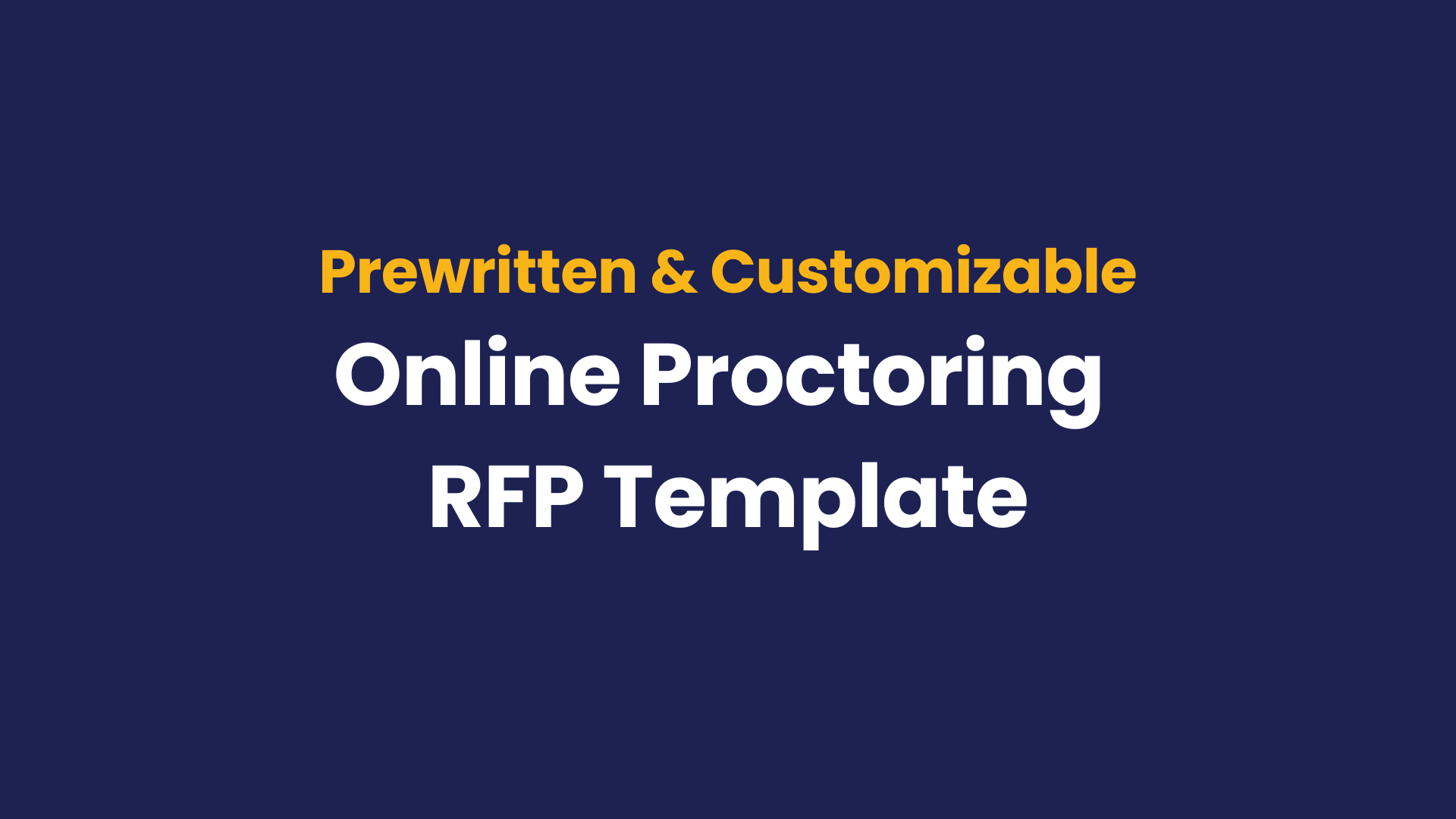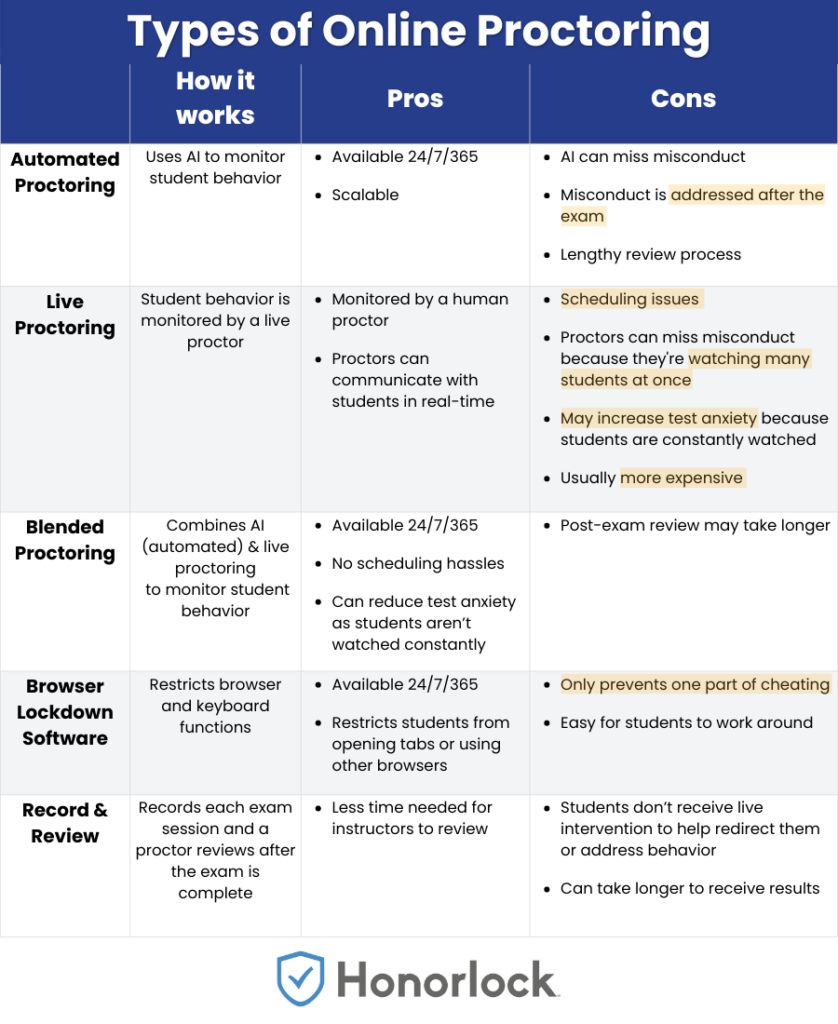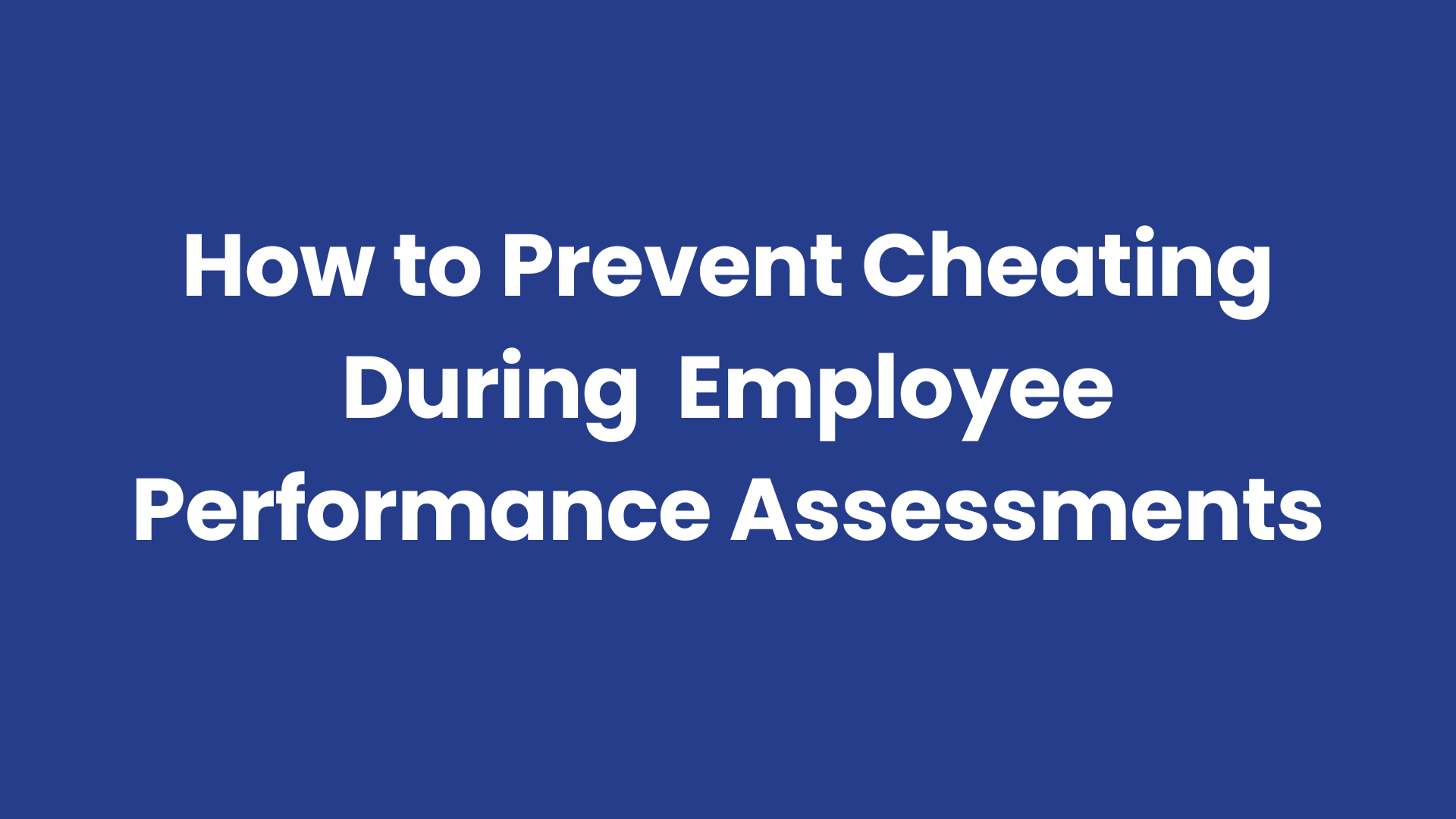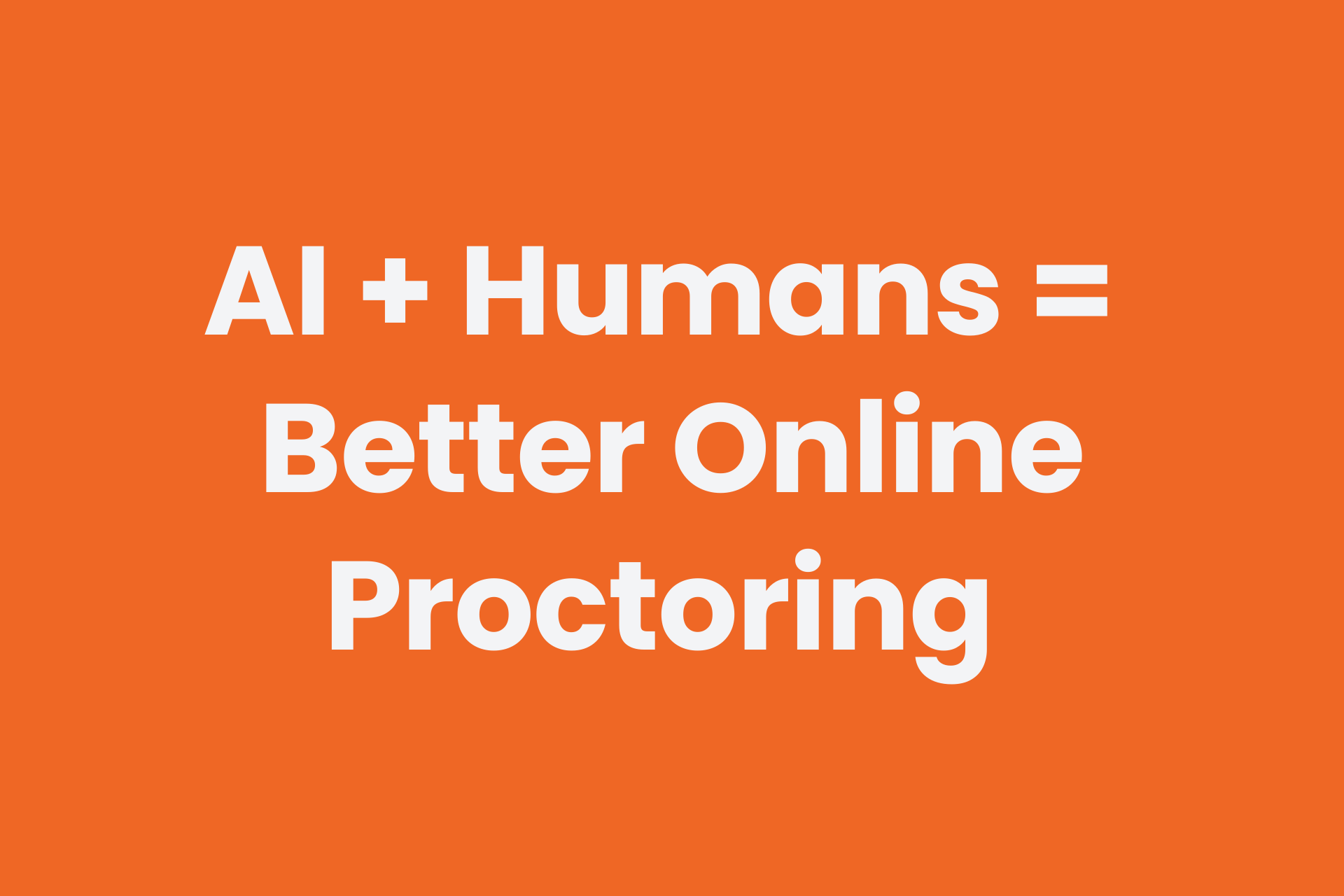Ohio room scan case summary
A judge found that a “room scan” completed during an online exam violated a student’s rights under the Fourth Amendment, but a final ruling in this case has not yet been reached.
Before we jump into further details about the room scan in this situation, we want to emphasize a few things:
1. Honorlock was not involved in the room scan in this situation
2. Honorlock does not require room scans
Honorlock’s online proctoring platform provides room scans as an optional setting that can be enabled or disabled as needed. We do advocate for clear, posted guidelines and consistent application of them across an institution.
3. Room scans are not unconstitutional, banned, or prohibited.
For more details, see the court documents in this case.
4. The problem was HOW this specific room scan was completed and reviewed
- Shifting guidelines and expectations regarding the use of room scans leading up to the exam.
- Due to health reasons, the student took the exam online at home and was only able to take the exam in his bedroom, was not aware he could have taken the exam at another location, and was not given a choice to opt out of the room scan.
- A school employee completed the room scan on Zoom with other students present and watching.
- Again, the room scan was not completed through Honorlock.
- The room scan completed on Zoom was visible to other students taking the exam.
What could this school have done better?
- Used a remote proctoring software, such as Honorlock, which ensures the privacy of room scans (only the proctor or exam administrator have access to view the room scan)In the factual summary of this case, it states that “Other students taking the remote test can see the room scans of other students.” While this may be possible if an instructor is personally overseeing a group test using any of the common video conferencing platforms, this is not possible using the Honorlock platform. At no point is the recording or room scan accessible to other students, other instructors, or any other party. The Honorlock platform operates as a 1:1 proctoring solution.
- Used consistent remote testing policies and guidelines at both the institution and course/exam levels
- Ensured policies were published well in advance (notice), students had access to the policies and guidelines (inform), and students consented to the practice of room scans
- In this case, at the beginning of the semester, a course syllabus stated students were subject to a room scan before, during, or after an exam. The student objected and the room scan policy was removed by the Professor. The Professor didn’t communicate this to the school’s Testing Services. The school’s Testing Services emailed the student about two hours before the exam and informed the student of the requirement to do a room scan. The student emailed the Testing Services informing them that he did not have enough time to remove sensitive documents from his work space. Before the exam started the proctor required the student conduct a room scan, which the student performed.
- Used a remote proctoring software, such as Honorlock, which ensures the privacy of room scans (only the proctor or exam administrator have access to view the room scan).
- In this court’s Opinion & Order, it states that “Other students taking the remote test can see the room scans of other students.” While this may be possible if an instructor is personally overseeing a group test using any of the common video conferencing platforms, this is not possible using the Honorlock platform. At no point is the recording or room scan accessible to other students, other instructors, or any other party. The Honorlock platform operates as a 1:1 proctoring solution.
- Provided a remote proctoring accommodation for this student who did not consent to room scans.
- Visit our article for more information on how to provide accommodations with Honorlock.
As the demand for online programs and distance learning continues, safeguarding online exams is a priority for schools to protect their accreditation, their reputation and the value of their programs.
Room scans are one element in creating a secure and equitable testing environment. Other important factors include things such as short test windows, clear expectations, utilizing a test bank for randomly generated test questions.
This is a good time to review your remote testing policies and procedures and make any necessary adjustments.
1. Are your remote test security practices, policies and procedures published in advance and readily available for faculty and students?
2. Do your policies include guidelines for when to use room scans and how to conduct a proper room scan?
3. Are your guidelines enforced consistently across all online courses and exams?
1. Publish your remote exam policies and guidelines in advance and include a link in the course syllabus
2. Get student’s written consent to the guidelines, specifically, to the room scan
3. Provide alternative testing locations for students who do not consent to remote room scans
4. For students who must test remotely, but do not consent to the room scan, accommodate their request by notifying the Honorlock proctor that room scans will not be used with that student.
For more information on how to provide accommodations, visit our KnowledgeBase article.
5. Follow your institution’s guidelines for proctoring online exams
Your institution may have certain requirements for proctoring, such as the use of room scans. Please adhere to your institution’s policies and guidelines for remotely proctored exams. Proctor Settings and Student Guidelines for your exam are tailorable and easily adjusted. For more information on what each setting means, use this article to access the respective article for your LMS.
1. Discuss the use of Honorlock and use practice exams
Review how to use Honorlock with your students. We encourage you to assign practice exams so students can gain familiarity with Honorlock’s LTI.
Note: you can setup the practice exams to mirror the same settings that will be utilized on the actual assessment (including a room scan).
2. Include Honorlock information in your course syllabus
Be sure that students have access to information about Honorlock in your syllabus.
3. Address any privacy concerns
Have an open dialogue with students and respond to any privacy concerns.
4. Create awareness and understanding of room scans
Familiarize yourself and your students with what a room scan is and what they can expect from it.
5. Get a signed consent form for room scans
6. Explain what to expect during a proctored exam
It’s important for students to understand what they can expect during a proctored exam.
Here’s what you can discuss with your students:
- Discuss the different proctoring settings that can be used and how they work.
- Honorlock advises using similar settings for every exam so students know what to expect and are familiar with functionality.
- We also recommend setting up your practice exam to mimic the same settings throughout the semester/quarter.
- An example of Standard Exam Guidelines language can be found here.
- Explain what in-exam flags are, their purpose, and what behaviors may trigger them.
- We recommend sharing this KnowledgeBase article. about in-exam flags with your students
- Provide clear, unambiguous test rules and instructions for all of your exams.
- Here’s an article with real examples of effective test rules and instructions for online exams and tips to remove any confusion.
7. Create a culture of academic integrity
Academic integrity goes beyond proctored exams. Creating a culture of academic integrity in your classroom can support positive decision-making during exams.
Check out our blog article on some helpful tips to improve the academic integrity within your classroom.
8. Join our educational webinars
Honorlock provides ongoing educational webinars every semester, including one for every supported LMS, be sure to register here.
If you do not find what you are looking for, please take a look at our library of previously recorded webinars found here, or please reach out to your CSM and/or Support Chat.
- What’s a room scan?
A room scan uses a test taker’s webcam to get a 360 degree view of the room.
- Why are room scans used?
Room scans help protect academic integrity by ensuring that there are no unauthorized resources or people in the room.
- When are room scans used?
A room scan may be required by an institution or exam administrator at the start of the exam to ensure that no unauthorized resources or people are in the testing environment. A re-scan during the exam may be requested by the proctor should there be indications of unauthorized behavior or resources.
- How are room scans completed?
Test takers enable their webcam and complete the room scan by panning the webcam on the device around the room.
- Are room scans commonly used in proctored online exams?
Yes. Room scans are common and, when done correctly, generally considered as one of several best practices for proctored online exams.
- Do all proctoring companies require room scans
No. Some proctoring companies require room scans, others provide it as an option tool to use.
About Honorlock room scans
Does Honorlock require room scans?
No. Honorlock doesn’t require room scans. Room scanning is an option feature that can be enabled or disabled.
How can instructors using Honorlock disable room scans for test-takers?
After creating the exam in the LMS, the instructor can pick which proctoring features to enable or disable for the exam, including room scanning.
Does Honorlock allow instructors to disable room scans for specific test takers?
Yes. Instructors can provide proctor instructions that allow specific test takers to bypass the room scan.
Who can view a room scan with Honorlock?
If the institution or instructor requires a room scan, only a Honorlock-trained proctor, the instructor, and key administrators at the institution will have access to review the room scan.
It’s important to note that a room scan is only viewed if there is questionable behavior flagged during the exam.
At that point, the proctor may view the recording, including the room scan. The instructor or an administrator may also review the recording, including the room scan, after the exam. Instructors only receive recordings in the event of a flag.
Can other test takers or people view the room scan?
No. The room scan is never accessible to anyone other than the Honorlock proctor, the instructor, and key administrators of the institution.
The recording or room scan is never accessible to other test takers, other instructors, or any other party.
More information about Honorlock:
Looking for more articles and information about higher education and online learning? Visit our resources section.










